Any kinds of plants beautify and make your home a cozier place to live in. This is especially true if they are well taken care of. That said, mold is one issue you may encounter with snake plants. We have identified every aspect you need to know on how to resolve this issue.
Snake plants can withstand different temperatures; however, exposure to extreme heat and cold may result in mold growth. Avoid overwatering and applying too much fertilizer, and ensure your plant gets enough sunlight.
In this article, we aim to guide and help you in keeping your snake plants safe against mold, determining how and why it happens, and taking good care of this plant. Read on to find out more about snake plants!
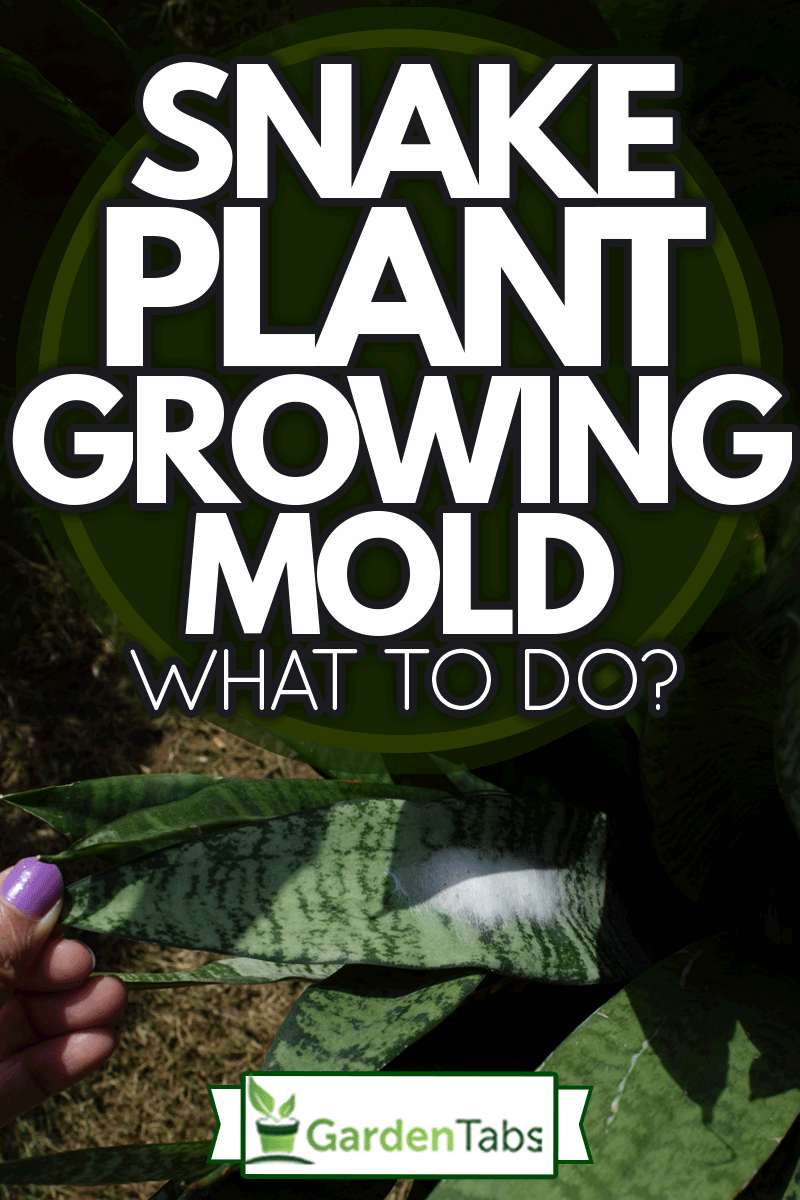
What Are Snake Plants (Sansevieria): An Overview
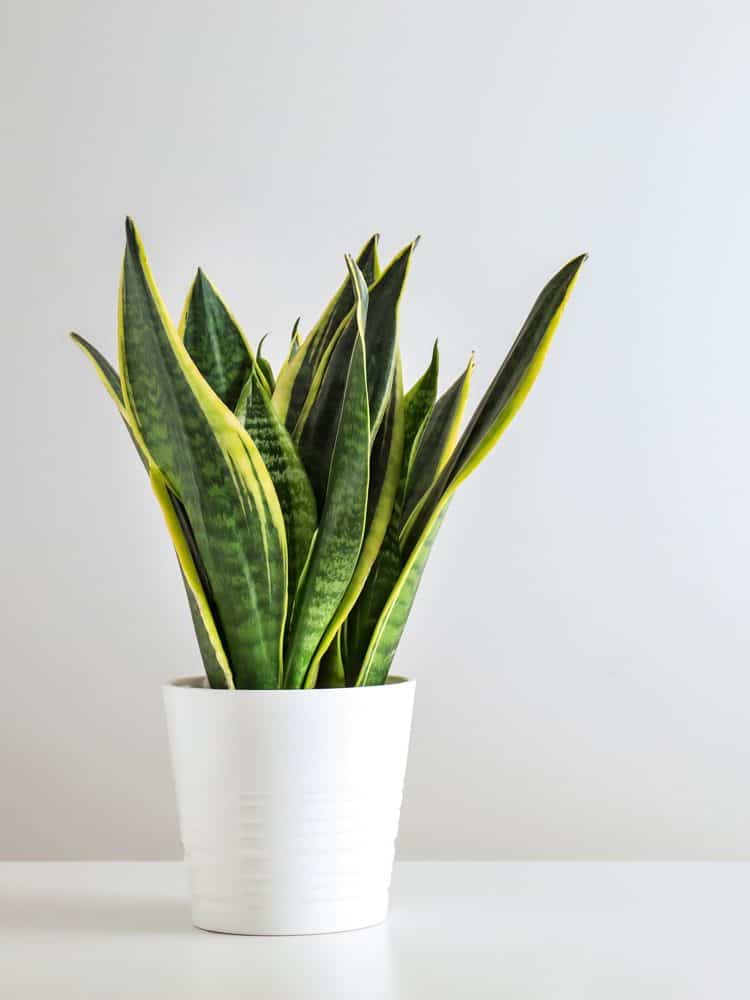
Snake plants, also known as mother-in-law's tongue, Saint George's sword, and viper's bowstring hemp, are native to dry and rocky areas of tropical Africa. Although it came from that continent, it was first cultivated in China because the people believe that the eight gods will bestow their eight virtues upon anyone who cares for that plant.
These virtues include prosperity, long life, beauty, intelligence, health, strength, poetry, art, and beauty. The Chinese often place the snake plants near the entryways of their homes so that these virtues may circulate and fill the entirety of their houses.
Even before this belief, snake plants were known to offer good fortune.
For related content, read this post: Where To Place A Snake Plant In Feng Shui
The leaves can grow up to 8 feet, depending on the variety you own. They have pointed tips that you should be careful of because once broken, the leaf blades can never grow back.
It is among the easiest plants to care for because it can withstand and survive varied conditions. Fast-draining soil, considerable exposure to sunlight, and infrequent watering are essential in keeping it alive.
Common Types Of Garden Mold
Various types of mold can affect your plants or vegetation. Determine the classification, and you will know how to remove and prevent this fungus from growing.
Gray Mold
Gray mold is the most common fungi that appear and infects different kinds of plant species. It grows in humid (damp) and cool conditions. Temperatures ranging from 45 to 60 degrees Fahrenheit and above 93 percent humidity levels will help them propagate and thrive.
To inhibit the formation of gray mold, prune the plants to enhance airflow. For indoor vegetation, you can improve air circulation by installing a small clip-on fan. Fungicides can also be used to eliminate fungi.
Click here to see this product on Amazon
Black Or Sooty Mold
As the name implies, these fungi cover the branches, twigs, and leaves of plants in black smut. This mold is the effect of honeydew or secretion of pests or insects living within the plant.
Use neem or horticultural oil or dishwashing liquid to treat the infected area. Avoid applying the solution to the foliage in direct sunlight because it can burn the leaves.
White Mold Or Powdery Mildew
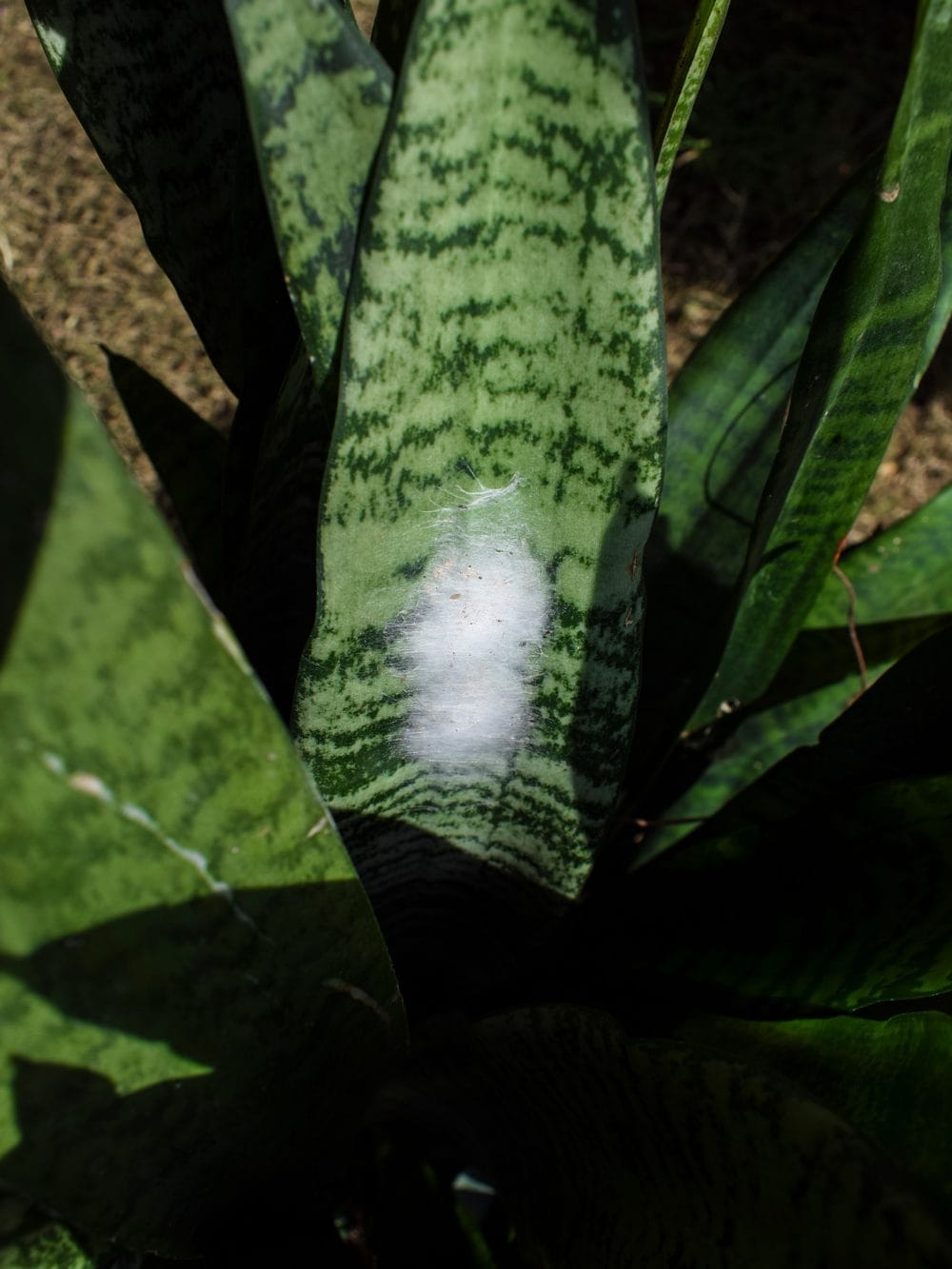
Airborne fungi cause white mold. It attaches itself to the plant's leaves and then rapidly spreads on other parts like the stem, trunk, and leaves. Nearby vegetations or foliage can be effected through the spreading of fungal spores into the air. As such, you need to treat the affected plants immediately.
These powdery mildews thrive in warm and humid environments. While it does not kill established plants, it can weaken their system and reduce their growth.
To remove white mold, mix one teaspoon of baking soda with a liter of warm water. Then you can manually remove the existing fungi by dipping a sponge and wiping the leaf or spraying the infected area with a sprayer. Insecticidal soaps can also be used.
Causes Of Mold And What To Do About It
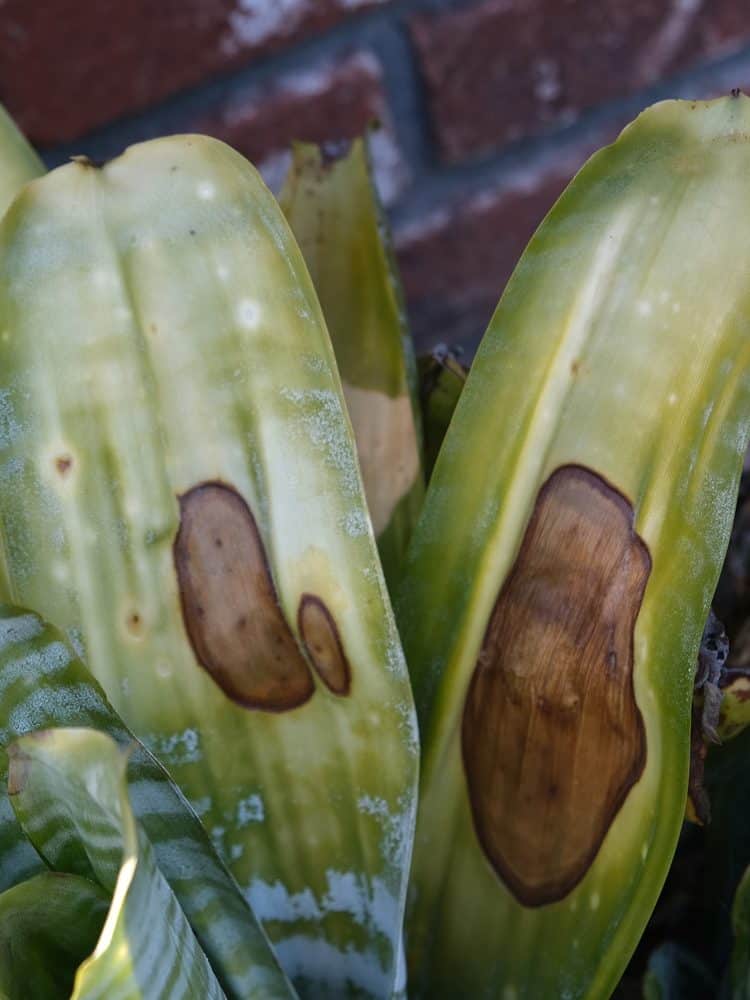
Knowing the causes can help you determine the solution or the course of action you need to take.
1. Overwatering
Excessive water in the soil is a growing area for mold because they form and thrive in moist, humid environments. Do not water the plant frequently. During winter, snake plants can go up to three months without water and once every month of watering at most.
2. Minimal Sunlight Exposure
A shaded environment is another growing area for mold. Since sansevierias are also indoor plants, they usually have minimal sun exposure. Regularly inspect the water content of the soil by simply scraping the upper layer and checking if the soil is moist.
You can also tell if the plant soil is still moist just by looking at the top layer of the dirt or ground. If it has too much moisture, place the potted plant in a less shaded area with indirect lighting. Snake plants can also tolerate direct bright sunlight for short periods.
3. Pest Infestations
Snake plants can get infested by pests. These insects tend to suck on the sap of this plant, leading to the existence of white mold on the leaves and weakening its system. Here are the common types of pests that you can find:
Mealybugs
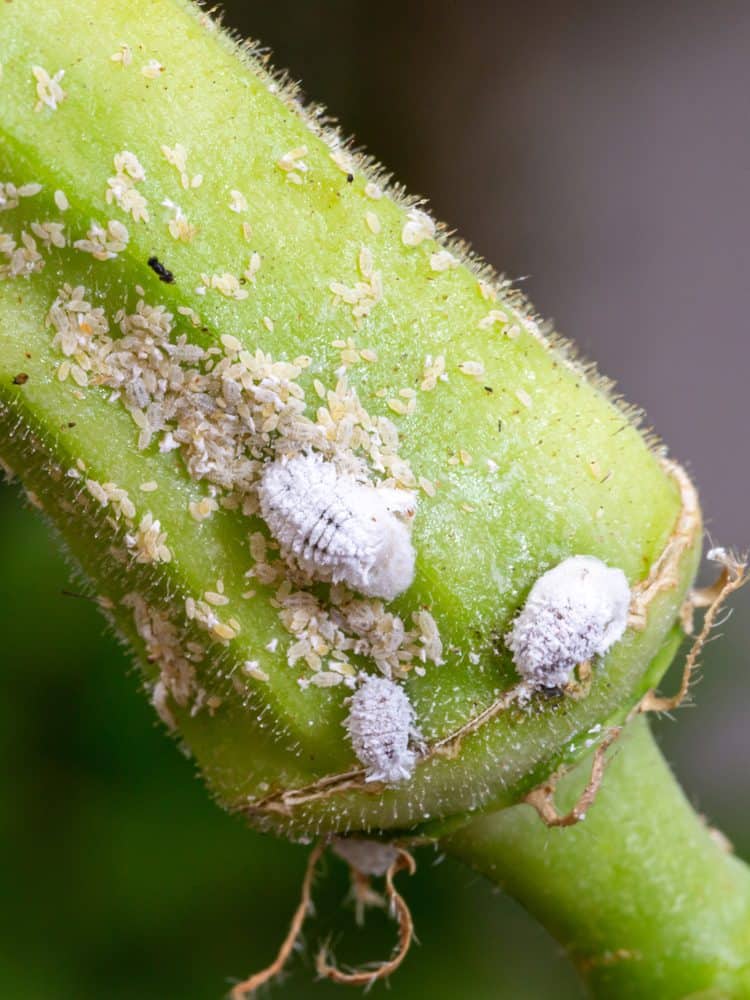
Mealybugs are white cottony soft-bodied insects that live in moist, warm areas. They are considered pests because they pierce their mouth strings on the plant's surface and feed on its juices. This action causes yellowing of the leaves, white mold, and curling.
They are specifically attracted to plants with high-nitrogen intakes (overfertilized) and those that are overwatered. To treat your snake plant, prune the affected areas, and dab the bugs with a cotton ball dipped in alcohol.
You can also use a spray solution - 1 teaspoon of rubbing alcohol, one teaspoon of vegetable oil, and 1 cup of water. Spray the mixture onto the plant and repeat the process every few days to ensure the pests are no longer present.
Neem oil has antifeedant properties that will affect the insects that will try to eat the plant. Spraying a mixture of 1 teaspoon of this oil and 1 gallon of water on the plant every 1 to 2 weeks is required.
Click here to see this product on Amazon
Spider Mites
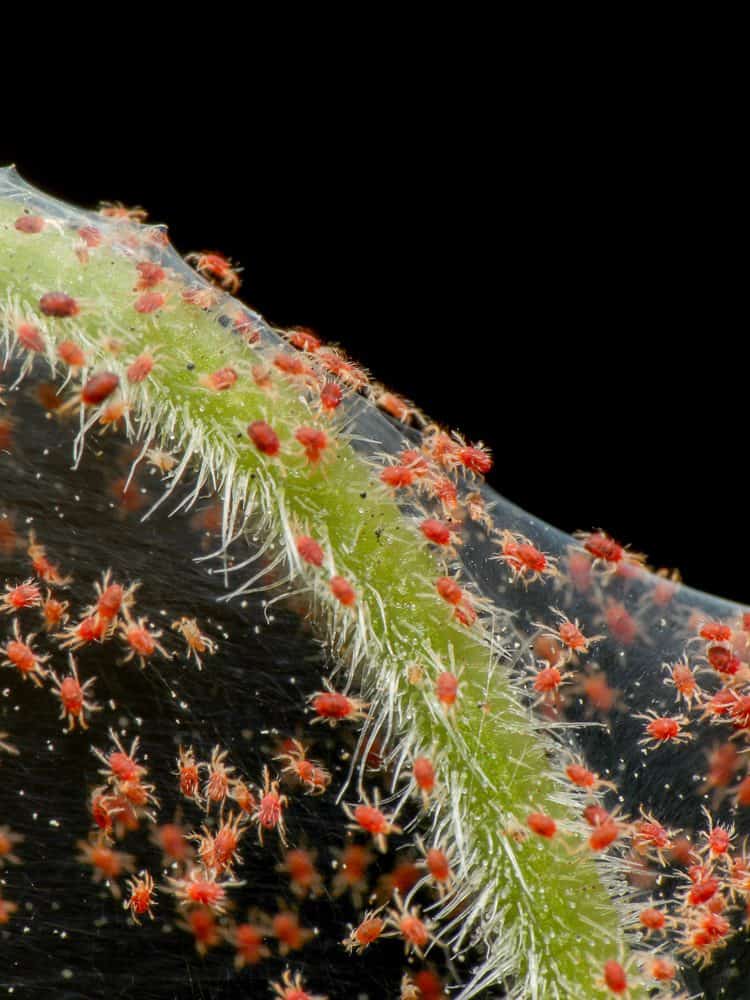
Spider mites are not insects but are classified as a type of arachnid. They have a reddish-brown or pale color and are tiny - about 1/50 inch in length.
These mites live on the underside of leaves, feeding on the leaf tissues by sucking up the plant's fluids. This eventually shows up as light dots. If left untreated, your sansevieria may turn yellow and die. They are usually found in hot, dry environments.
To eradicate spider mites, you can start by washing the plant with a strong stream of water. This way, you can get rid of the pests in large quantities. Afterward, you may apply insecticides weekly to control infestation and eventually eradicate all of them.
Mixing neem oil with water is an alternative. Spraying the substance on the infected plant will kill the eggs and disrupt the mites' reproductive cycle. Dabbing rubbing alcohol on the pests will also kill them.
4. Other Plants
Plants with white mold can spread fungal spores through the air onto your nearby plants. The presence of these molds is contagious and is needed to be treated and prevented. Environments with high humidity and low airflow are the main reasons for the formation of these fungi.
Mix water with dish soap or baking soda to get rid of them. You can either manually wipe the leaves using a sponge, or you can opt for a sprayer. To neutralize the mold, simply use a milk spray or neem oil.
How Do You Care For Your Snake Plants?
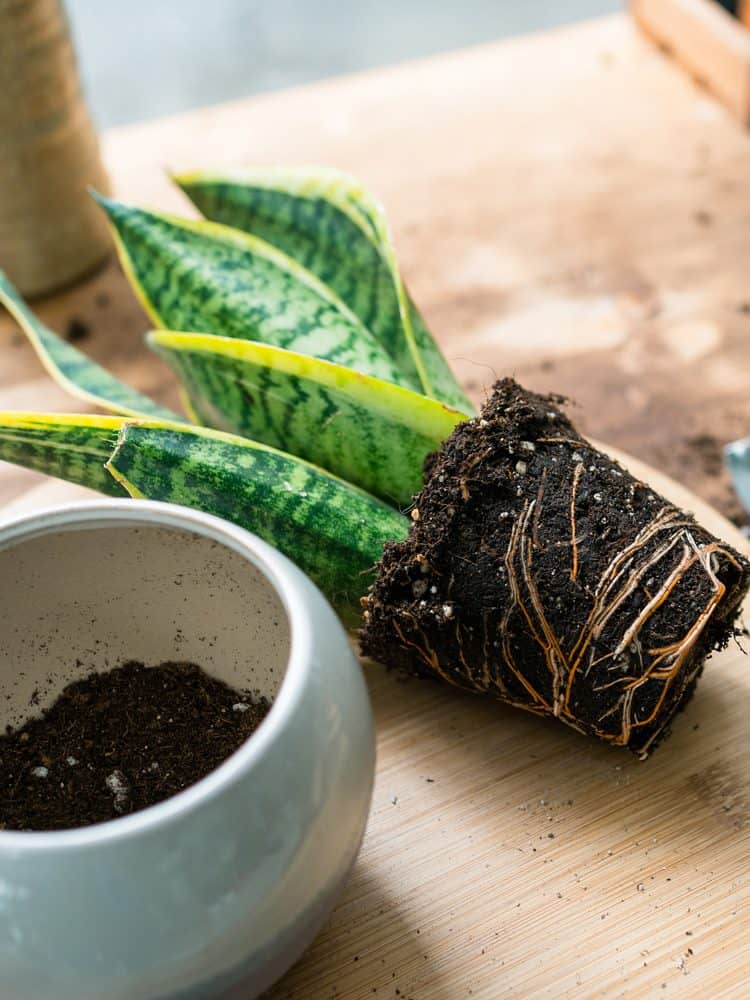
Avoid Frequent Or Overwatering
As part of its care routine, snake plants only require minimal watering, especially because it is a desert plant that grows well in dry areas. The plant's system cannot handle excess water. Because of this, molds form, and various kinds of pests become attracted to the plant itself.
Although the plant can handle extended dryness, succulents have smaller roots that can rot if overwatered.
Read more about watering your snake plant here: How Often To Water Your Snake Plant
Needs Plentiful Sunlight
Snake plants prefer ample indirect sunlight. However, they need to be protected against harsh summer heat to prevent them from dying. Although they can withstand extreme conditions, ensure the right amount of water and moisture in the soil is maintained for optimal growth.
Use Fast-draining Soil
Since it requires minimal watering and the right amount of sunlight exposure, fast-draining soil will not let the plant’s root system to rot or decay because of excessive moisture.
In Closing
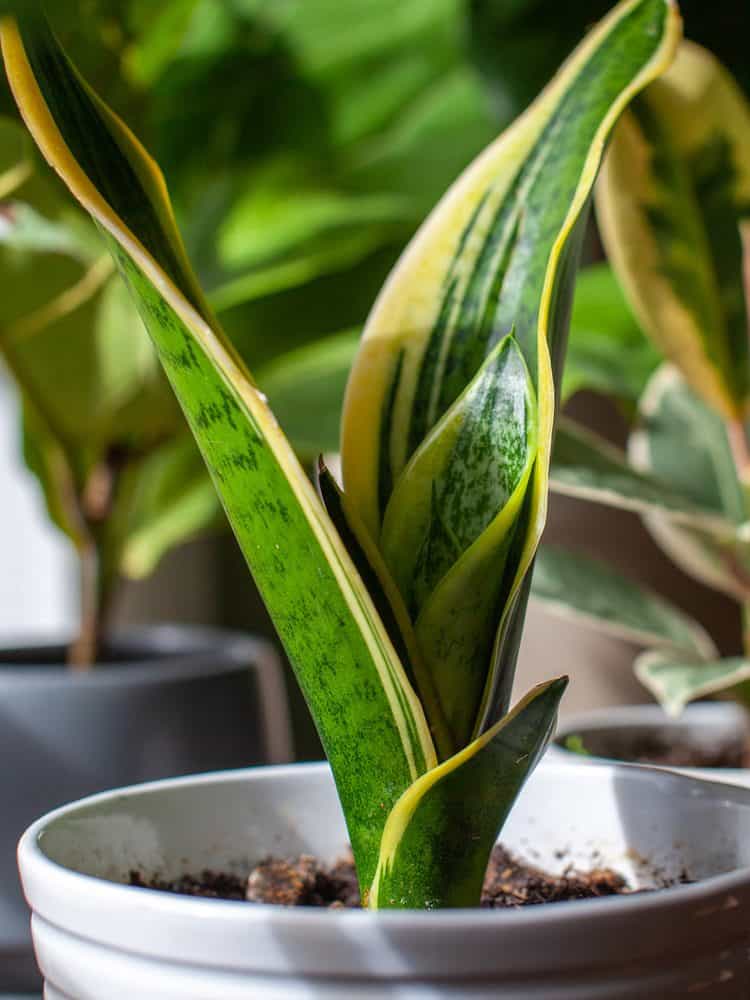
Snake plants need adequate care and maintenance, especially if mold forms on the leaves or soil. Regularly check the foliage for any growth and perform the solutions depending on the cause. We hope this article helped address the issue. Happy planting!



I like this article and many of your other articles you are very informative. Would you have any type of article on separating plant, instead of growing my snake plant in a circular container I wanted to use A rather long rectangular container so it can spread out fill in and I have a wall of snake plants nice looking center piece.
Hi Gary! We appreciate your feedback. For more helpful info, please check out this post: https://gardentabs.com/propagating-snake-plant-owners-guide/